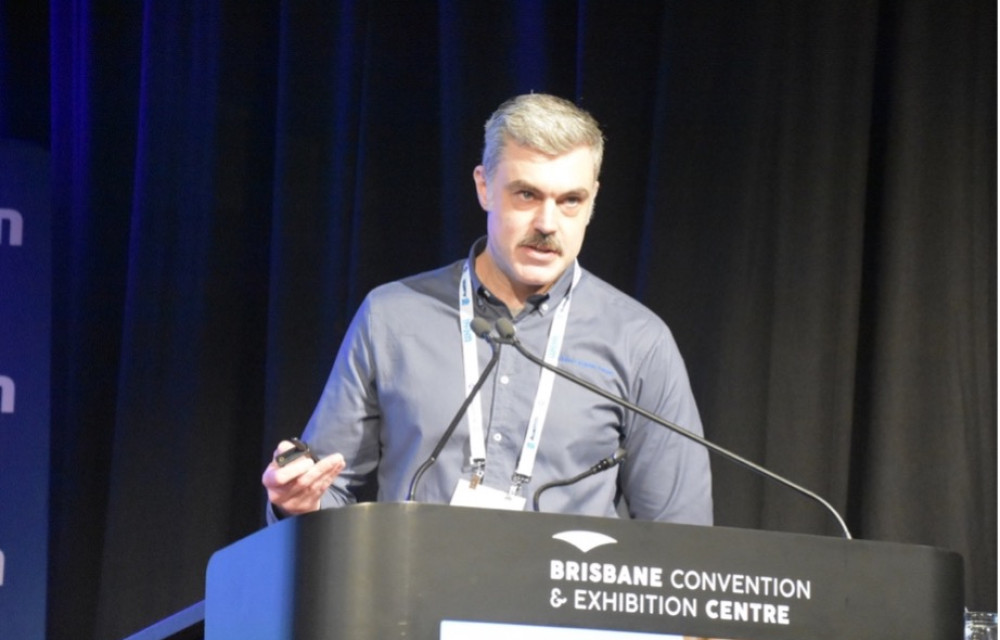Cyclone sand dams could be Australia’s untapped edge in tailings management turning old technology into a smarter safer future for mine sites


, , , , , , , ,
, ,
,
Australia’s mining sector could be overlooking a low-risk, high-reward tailings management method that’s been delivering stability and efficiency in other parts of the world for decades.
At the Life of Mine | Mine Waste and Tailings Conference 2025 in Brisbane, James Penman, senior geotechnical engineer and associate at KCB Australia Pty Ltd, presented the paper Applying Hydro-Cyclone Classification for Tailings Management in Australia, co-authored with A. Mayot.
Drawing on more than 16 years of experience in the planning, design, construction, operation, and closure of tailings storage facilities (TSFs) in Australasia, North and South America, and Africa, James made a compelling case for revisiting a technology that’s mature, reliable, and proven in some of the world’s most challenging mining environments.
Hydro-cyclones, James explained, are mechanical devices that separate tailings into coarse and fine fractions based on particle size. “They have no moving parts, they’ve been around since the 1890s, and they’re already a familiar sight inside processing plants,” he said. “The difference is that in many jurisdictions, they’re also used outside the plant to produce a free-draining sand fraction for dam construction – a practice that’s still rare in Australia.”
The process works by spinning the whole tailings stream inside the cyclone, with the heavier sand particles exiting at the bottom and the finer “slimes” fraction flowing over the top. The coarse sand can then be used to build robust, free-draining embankments, while the reduced volume of fines is deposited in the impoundment. The result is a smaller overall footprint, improved drainage and stability, and in some cases, reduced need for large buttresses or costly retrofits.
“This isn’t experimental,” James emphasised. “Cyclone sand dams have been built to modern design standards in high-seismicity zones like Chile and in high-rainfall areas like Panama. They’re in widespread use across North and South America, and Southern Africa. Yet here, outside of Alcoa’s bauxite residue operations at Kwinana, Wagerup, and Pinjarra, there’s virtually no uptake.”
James believes the barriers in Australia are less about technical feasibility and more about habit, perception, and organisational silos. Upstream construction – the most common method here – has been the default for decades. “It’s familiar, it’s perceived as cheap, and with our generally flat terrain and dry climate, it’s been seen as low risk,” he said. “But as we’ve learned more about tailings strength over time, those assumptions don’t always hold. Once you start adding buttresses to compensate, the cost advantage disappears.”
Another constraint is the disconnect between processing plant design and tailings facility planning. “If the plant is optimised purely for metallurgical recovery, you may end up with very fine tailings that are difficult to classify. Those decisions are often locked in early, and the TSF team inherits whatever comes down the pipeline. We need those conversations about grind size and material properties to happen earlier so we can optimise for both recovery and tailings performance.”
Operational mindset also plays a role. “Cyclone sand dam construction is not a ‘set and forget’ exercise,” James explained. “You need a dedicated operational team to plan and manage deposition daily – moving spigots, directing underflow, building the embankment in a controlled way. In other countries, that’s standard practice. Here, many operations still expect tailings placement to be managed by a single operator who splits their time with other duties.”
Yet, James argued, trialling the approach is straightforward and relatively low cost. “You can run a single cyclone into a specific point of the TSF, measure the separation performance, and see how it behaves. There’s minimal capital outlay, and OEMs are often willing to provide simulations for free. It’s an easy way to build confidence in the method.”
He stressed that hydro-cyclone classification should be considered as part of every TSF alternatives assessment – not as an afterthought, but as a serious design option. “If you don’t evaluate it, you can’t claim to have looked at all viable alternatives. It may not suit every site – and that’s fine – but the decision should be based on evidence, not assumptions.”
For James, the message is simple: Australia has the expertise, the technology, and the precedent to use cyclone sand dams effectively. “We already build dams out of sand when we use upstream construction,” he said. “This is just a different, often better, way of getting the sand you need – and of reducing the risks and footprint of the facility you leave behind.”
Picture: James Penman outlines how hydro-cyclone classification could transform tailings management practices in Australia. Photo: Jamie Wade.
